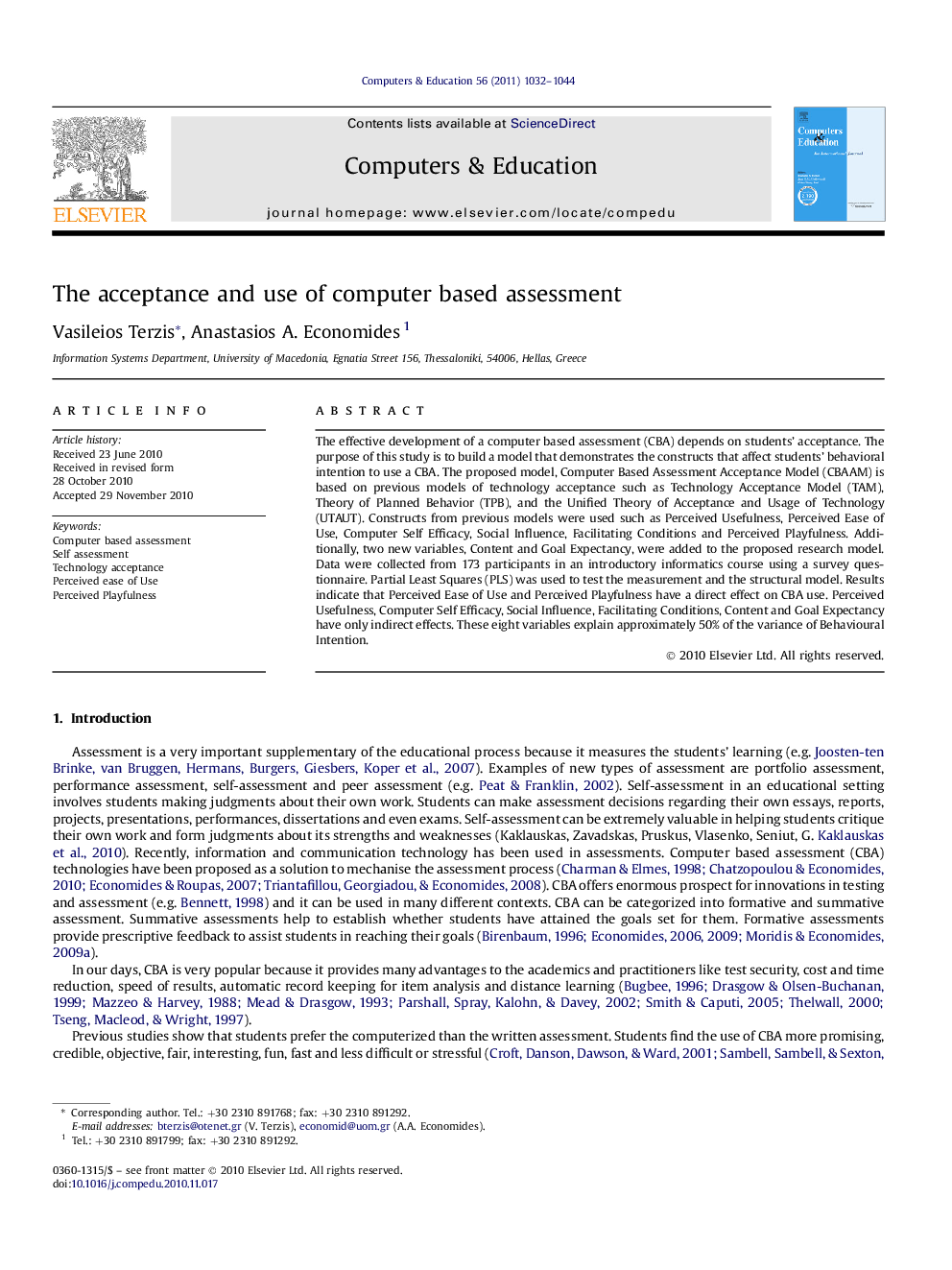| کد مقاله | کد نشریه | سال انتشار | مقاله انگلیسی | نسخه تمام متن |
|---|---|---|---|---|
| 349171 | 618215 | 2011 | 13 صفحه PDF | دانلود رایگان |

The effective development of a computer based assessment (CBA) depends on students’ acceptance. The purpose of this study is to build a model that demonstrates the constructs that affect students’ behavioral intention to use a CBA. The proposed model, Computer Based Assessment Acceptance Model (CBAAM) is based on previous models of technology acceptance such as Technology Acceptance Model (TAM), Theory of Planned Behavior (TPB), and the Unified Theory of Acceptance and Usage of Technology (UTAUT). Constructs from previous models were used such as Perceived Usefulness, Perceived Ease of Use, Computer Self Efficacy, Social Influence, Facilitating Conditions and Perceived Playfulness. Additionally, two new variables, Content and Goal Expectancy, were added to the proposed research model. Data were collected from 173 participants in an introductory informatics course using a survey questionnaire. Partial Least Squares (PLS) was used to test the measurement and the structural model. Results indicate that Perceived Ease of Use and Perceived Playfulness have a direct effect on CBA use. Perceived Usefulness, Computer Self Efficacy, Social Influence, Facilitating Conditions, Content and Goal Expectancy have only indirect effects. These eight variables explain approximately 50% of the variance of Behavioural Intention.
Research highlights
► We propose Computer Based Assessment Acceptance Model (CBAAM).
► CBAAM uses eight constructs to define Behavioural Intention to Use a CBA.
► Behavioural Intention is explained directly through Playfulness and Ease of Use.
► Playfulness is defined by Usefulness, Content, Ease of Use and Goal Expectancy.
► Computer Self Efficacy and Facilitating Conditions define Perceived Ease of Use.
Journal: Computers & Education - Volume 56, Issue 4, May 2011, Pages 1032–1044